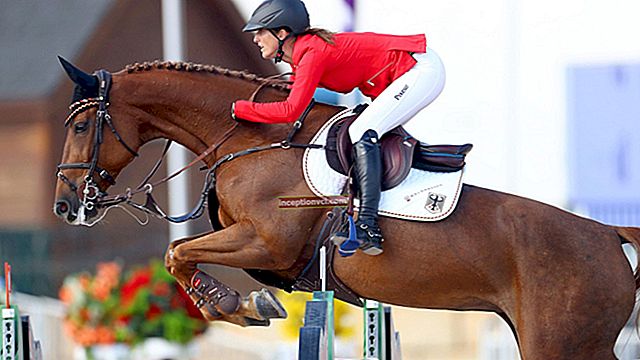A bit of the history of crossbows

The crossbow is probably one of the most curious types of small arms and the most interesting military invention. Its appearance and the design of the trigger cause a great temptation to give the crossbow the name of a transitional link from an ancient bow to a firearm. But in fact, this is not the case. The crossbow first appeared around the 5th century BC and, along with the bow, was in service with many armies of the world until the 16th century, and then ceased to exist at the same time as the bow. The crossbow ceased to exist in the sense that its war period of history ended, the crossbow, from a means of defeating the enemy's manpower, became a subject of hunting, competition and entertainment. It is worth noting that the bow has survived to this day in the same quality.
Crossbow is a Latin word made up of the words "arcus" and "ballista", which translates as bow and catapult, respectively.
It is a weapon that combines the properties of a bow and ballista properties at the same time. The crossbow was very popular in the Middle Ages. For the siege of cities and castles, huge ballistas were used, with which it was possible to shoot the enemy with arrows made from a whole tree trunk, or huge boulders. Of course, there were also models designed for manual shooting. In ancient Russia, a crossbow was called a crossbow. As a weapon, crossbows were not immediately recognized. Bows made it possible to fire at the enemy on the move and were cheaper to manufacture. At the same time, much more time was spent on preparing for the shot and on the shot from the crossbow itself.

Crossbows remained on the sidelines until about the 10th century. At this time, the widespread construction of castles began in Europe. It was here that the crossbows showed their formidable strength and power. Hiding under the protection of the wall, the crossbowman had the opportunity to calmly reload his weapon and at the same time not substitute himself under the shots of enemies. The crossbow possessed all the qualities necessary for the defenders of fortresses. This is a high strength and range of the arrow, very high accuracy and ease of aiming. Anyone could learn to shoot a crossbow. Over time, crossbows began to improve due to the fact that, understanding their useful properties, they began to improve. The primacy in the invention of crossbows belongs to China. Archaeological excavations and ancient written evidence prove that the crossbow appeared in the 5th century BC or a little earlier. This fundamentally new type of throwing weapon was widely used in the army of the Chinese rulers.
Chinese gunsmiths of those times constantly modified and improved the design of crossbows, constantly making significant changes to it. For example, two-beam and three-beam crossbows were created, the firing range of which was one and a half to two times higher, multiply-charged crossbows appeared, allowing firing in a volley, and even magazine crossbows.
Also, Greece is rightfully considered the center of the invention of crossbows. In ancient Greece, the crossbow appeared around the 1st century BC. There he was called as "gastrofet", which means "belly shooter." He wore this name because, when erecting the bowstring, the shooter bent over and rested his stomach against the butt. In wild Europe, crossbows appeared much later - around the 10th century. The first memories of crossbows date back to this particular time. With the widespread use of crossbows, the good old bow has not received oblivion. These types of throwing weapons have always competed with each other. In the Sherwood forests, Robin Hood, raging, sent arrows from a yew bow to the enemies, and in Switzerland, William Tell shot the Austrian occupiers with crossbow bolts.
The crossbow could not compare with the bow in terms of rate of fire, but it surpassed it in power and range. A bolt fired from a combat crossbow had an initial flight speed of up to 70 meters per second and could pierce knightly armor from a distance of one hundred paces.
One of the indisputable advantages of the crossbow was that in fact there was no need to learn how to shoot from it. And to organize the crossbow unit, it was enough just to distribute crossbows to the demobilized and spend a little time explaining its design and principle of operation. And to learn how to shoot from a bow, you need to study for a long time under the supervision of an experienced archer. Of course, to become an accurate crossbowman, you also need a lot of experience and certain skills, but in the battles of armies, the density of firing is more important than the accuracy of lonely warriors. About crossbows, there has recently been a misconception that in the Middle Ages, the crossbow was a weapon for the nobility. Perhaps this was influenced by the level of cost of modern sports crossbows, which are really expensive. This is certainly not the case. Riflemen were recruited from all walks of life, crossbowmen formations belonged to the infantry, and representatives of noble blood did not really like to serve in the infantry. It should be noted that for some time there were also cavalry units of crossbowmen, but given that it is inconvenient to reload a crossbow at a gallop, they did not last long. The greatest success in the manufacture of crossbows was achieved by craftsmen from Genoa. It is to them that the palm tree belongs to the use of compound arcs in the design of crossbows. The most common material for making crossbows was, of course, wood. From the outside, the arcs were glued with tendons, which had high strength and elasticity. From the inside, horny plates were glued to the arcs, which increases the strength and reduces the deformation of the crossbow. As a result of these tricks, crossbows have become much more powerful and reliable in use.
In the 15th century, steel arcs were used for crossbows, but due to their high cost, they were not widely used. And they used steel arcs mainly for siege weapons. Such weapons made it possible to fire at targets from a distance of 300 meters. There are many ways to cocking a bowstring on a crossbow. One of them was the way in which the crossbowman stood on an arc and could cock the bowstring with his hands. But this method of erecting the bowstring could lead to a breakdown of the arc. Therefore, the arcs were installed much further, and a specially invented hook made it possible not to stand with your foot on the arc.

In the XIV century, the "goat leg" was invented. This is a mechanism with which you could cock the bowstring without using your legs. The disadvantage of this mechanism was the inability to pull the bowstring of combat crossbows. An intermediate step in the evolution of crossbows was the use of various other stringing devices such as a winch or jack. And at the end of the 15th century, a device was developed, which was named "kranekin". Kranekin pulled the bowstring with a toothed rack and several gears. With the help of the kranekin, it was possible, practically without straining, to stretch the arcs of maximum power. Unfortunately, such qualities as reliability and reliability in operation were hampered by a rather long cocking of the bowstring. To bring the crossbow into combat readiness, it was necessary to crank a special handle 30 times. This slowness and high cost did not contribute to the widespread adoption of such a system. Therefore, crossbows of this type began to be used only for entertainment and hunting.

Along with the improvement in the design of the crossbow, new types of designs have appeared. For example, if the early trigger systems had a nut that was not fixed, but held only by the shape of the hole, then a little later the nut began to be fixed with belts passing through the axis of the nut and wrapping around the stock of the crossbow.Even later, the time came for the rigid axle, which was mounted in the box. By the way, in about 1500, by order of Emperor Maximilian I, who almost died while hunting from an accidental release of an arrow, a simple safety device was made. The use of a fuse made it possible to exclude an unintentional shot. In the 14th century, the first tensioning device, called the tensioning hook, was invented, which was attached to the shooter's belt. To pull the bowstring, it was necessary to rest his foot on the stirrup, the crossbowman squatted, hooked the bowstring to this hook and, straightening, pulled the bowstring. The development of this principle of drawing the bowstring was, described above, "a goat's leg". English and German gates were born only in the 15th century. In the 16th century, miniature crossbows appeared in Italy, which were worn under clothing. They were soon banned by the government, and a huge fine for wearing and using was imposed by the Senate of Venice, but this did not diminish their popularity. Over time, variants of crossbows appeared for firing bullets made of clay or metal. At the same time, aiming devices first appeared. And the end of the 16th century was marked by the appearance of crossbows, which were combined with firearms.

Now let's look at the arrows. They were much shorter than arrows for a regular bow. Crossbows often used crossbow bolts and crossbow bullets instead of arrows. Crossbow bolts are all-metal needles about 20 cm in size. They were used to hit targets in light armor. Sometimes plumage was made on the bolt to improve ballistic properties. In the castles of Europe there were special manufactories that were engaged in the manufacture of crossbow arrows.
Closer to the 16th century, crossbows gradually began to be replaced by various types of firearms. Crossbows were invented with a metal barrel instead of a bow, called "arquebus". And by the end of the 16th century, crossbows completely replaced firearms.
A crossbow in Russia was a small bow made of iron or horn, which was mounted in a wooden butt. There was a stock on the butt, a special groove of which was intended for crossbow bolts. In this groove, short bolts, forged from iron, were laid. Further, the shooter lowered the stretched bowstring with the trigger and fired a shot. A little later, the easel crossbows, which were installed on a special frame with wheels, began to be manufactured separately. In the easel cross-fire, a bow made of steel and a bowstring made of ropes or ox veins were used. The bowstring was cocked using a toothed device - a self-firing brace. The introduction of braces was a revolution in the device of crossbows of the XII-XIV centuries.

Such a long history of the crossbow cannot end in a museum. They are still alive today. Naturally, a 21st century crossbow is a combination of the latest technologies and innovative materials. For example, for the production of the stock and bed, durable fiberglass is used, and the booms are coated with Teflon to reduce the friction of the boom on the bed.


For the most part, crossbows are purchased by people in whose veins a craving for outdoor activities and adventure flows. There are even clubs for crossbow lovers, in which, united by a common hobby, people actively spend their time.

Crossbows were and remain the weapon of the nobility and those who prefer to confidently go to the goal. It will also not be superfluous to emphasize that permits are not required for their purchase and use. As soon as you get yourself a crossbow, you can immediately go on a picnic with friends and practice shooting from it.









